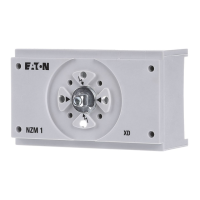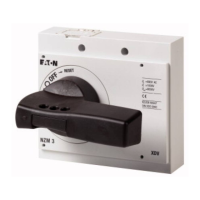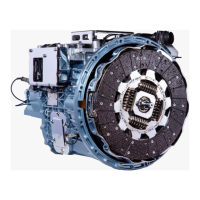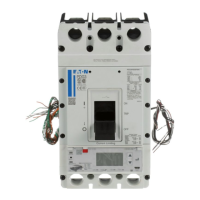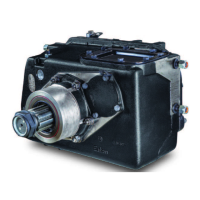7. Maintenance
7.3 Storage, transport and disposal
Ambient climatic conditions
Air pressure (in operation)
795 - 1080 hPa
max. 2000 m a. NHN (standard elevation zero)
Temperature
Operation
± 0 – +50 °C (+32 – +122 °F)
Mounting position
XV-303-10-…, XV-303-70-...
α ≦ ± 45°, T ≦ 50 °C (122 °F)
XV-303-15-.E.-..., XV-303-15-.02-..
α ≦ ± 10°, T ≦ 50 °C (122 °F)
XV-303-15-.00-...
α ≦ ± 10°, T ≦ 50 °C (122 °F)
α ≦ ± 45°, T ≦ 45 °C (113 °F)
Inclination from vertical: α ≦ ± 45° at operating temperature ≦ 45°C
possible (if using natural convection)
Storage / Transport
-20 – + 60 °C (-4 – +140 °F)
Relative humidity
Relative humidity 10 - 95 %
Condensation
non-condensing
Before commissioning
If storing/transporting the device in cold weather conditions or in
such a way that it will be exposed to extreme differences in tem-
perature, make sure that no condensation forms on or inside the
device.
If there is condensation in or on the HMI panel, do not switch on the
device until it is completely dry.
Use the original packaging to ship the device.
The XV300 is sturdily built, but the components inside it are sensitive to excessively
strong vibrations and/or mechanical shock.
Accordingly, make sure to protect the XV300 from mechanical loads that exceed the
scope of the unit's intended use.
The XV300 should only be transported in its original packaging after being packed prop-
erly.
7.3.2 Disposal
EXPLOSION HAZARD
LITHIUM BATTERY
The lithium battery inside the XV300 may explode if handled incorrectly.
XV30004/19 MN048017ENwww.eaton.eu
77

